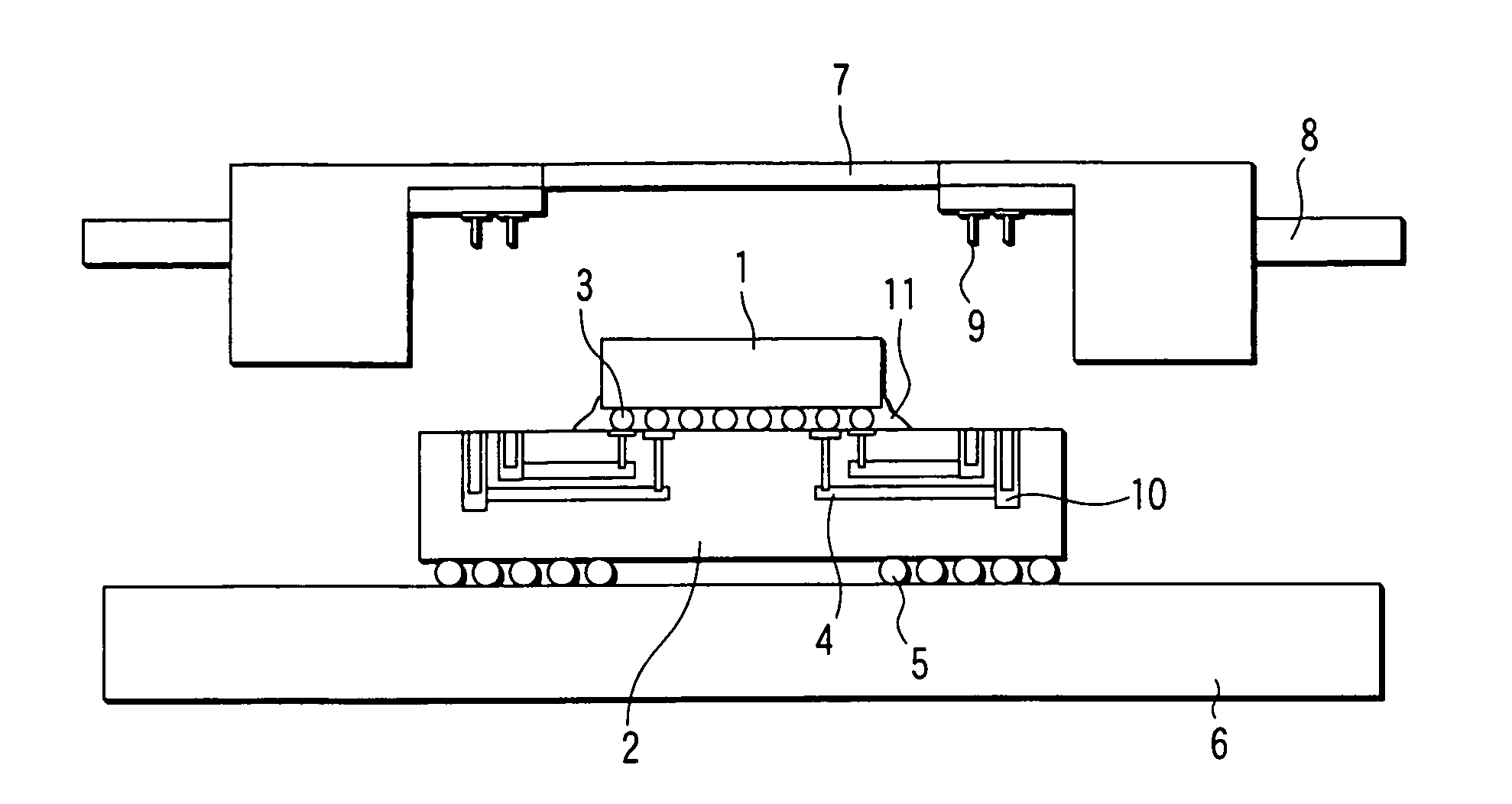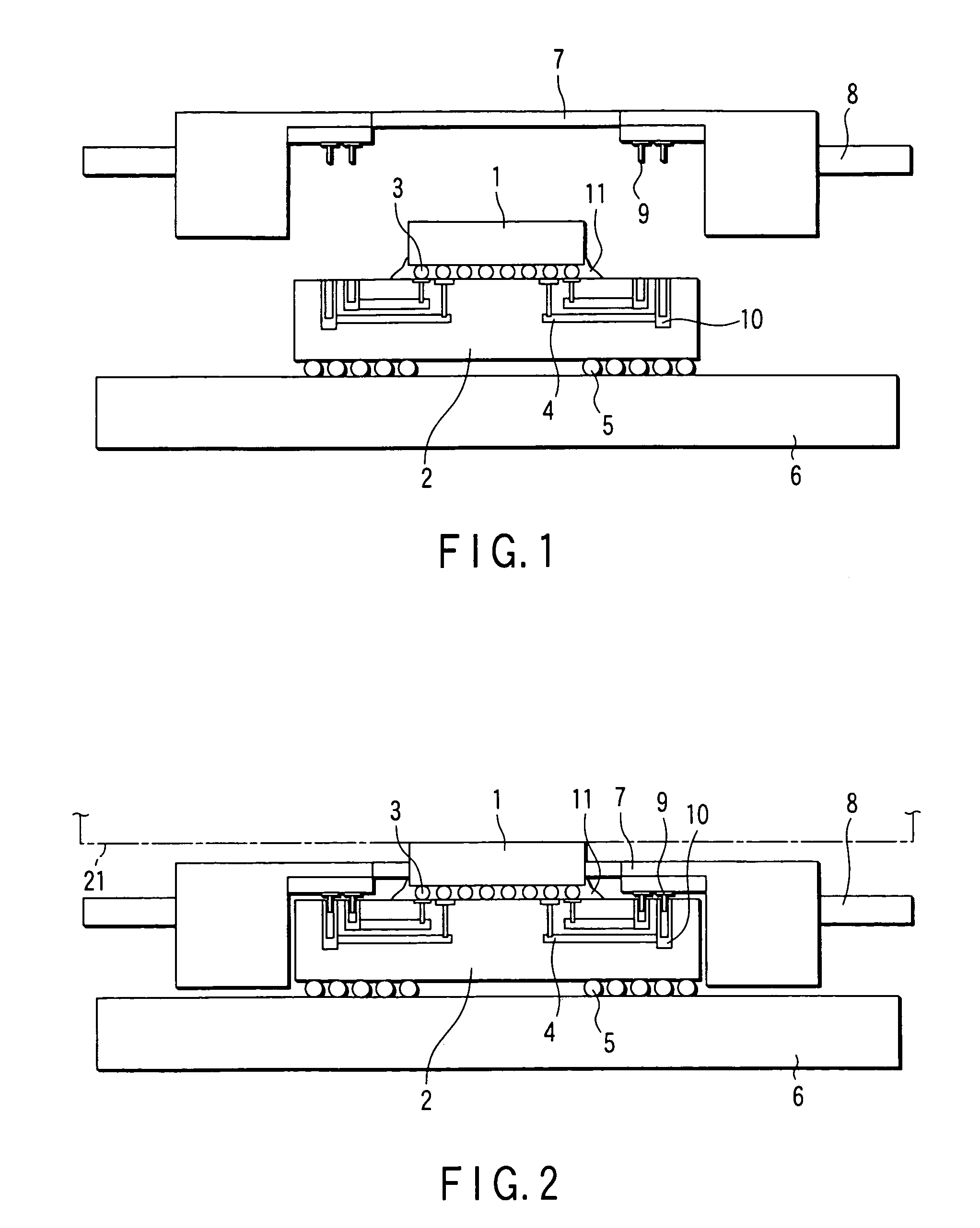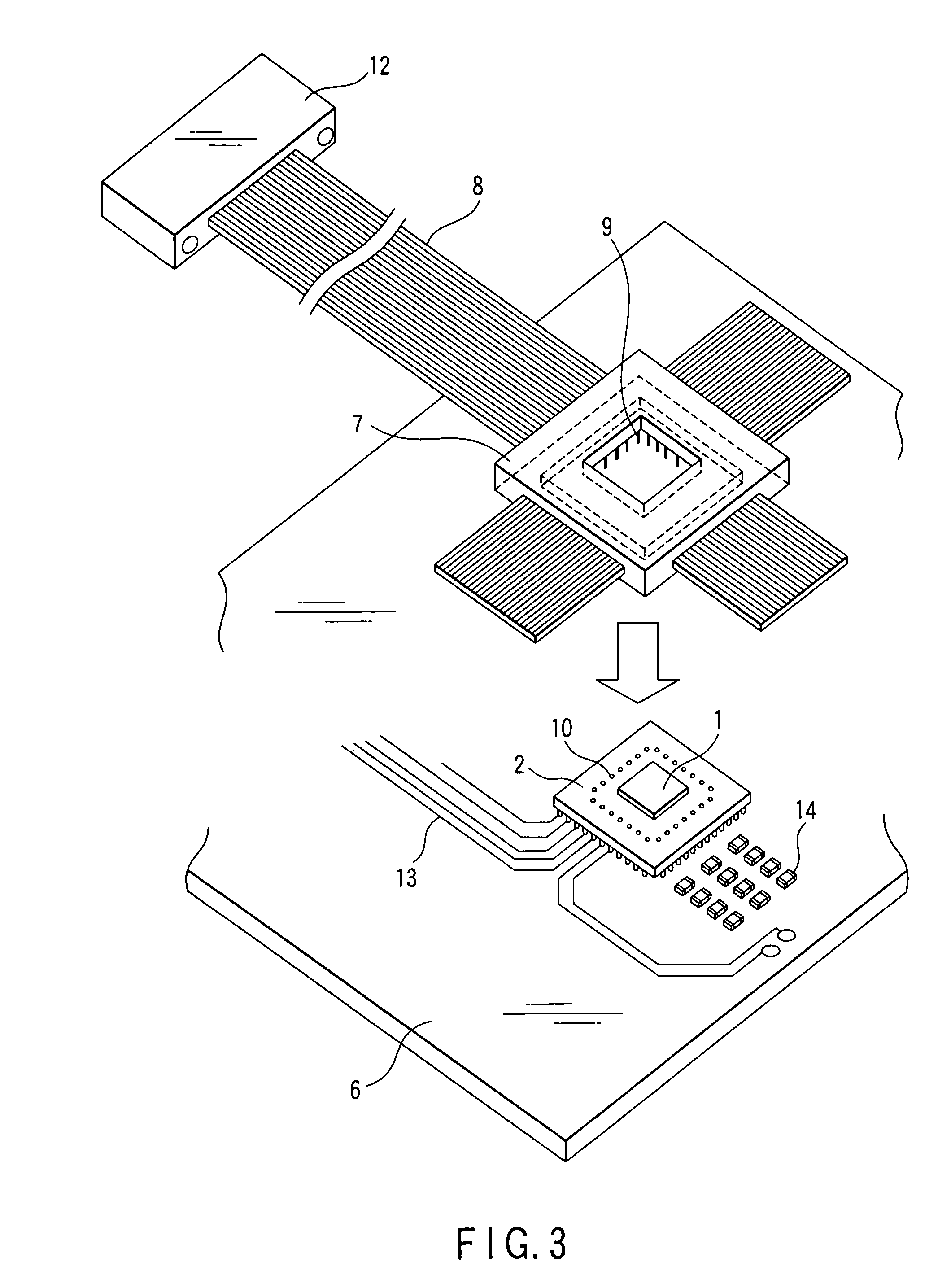LSI package provided with interface module and method of mounting the same
- Summary
- Abstract
- Description
- Claims
- Application Information
AI Technical Summary
Benefits of technology
Problems solved by technology
Method used
Image
Examples
first embodiment
[0074]FIG. 1 is a cross sectional view schematically showing the configuration of an LSI package, comprising a high-speed interface module according to a first embodiment of the present invention before the state that an optical interface module is connected to the LSI package. On the other hand, FIG. 2 is a cross sectional view schematically showing the configuration of the LSI package shown in FIG. 1 and having an optical interface module connected thereto.
[0075]In FIGS. 1 and 2, a reference numeral 1 denotes a signal processing LSI. As shown in the drawing, the LSI 1 includes signal input and output terminals that are electrically connected to an interposer 2 by solder bumps 3. An under-fill resin 11 seals the connecting portions of the solder bumps 3. A high-speed signal wiring 4 capable of transmitting signals at a high-speed is arranged within the interposer 2. Pads are formed at one ends of the wiring 4, and the pads are connected to the solder bumps 3 having the signal input...
second embodiment
[0085]FIG. 4 is a cross sectional view schematically showing the configuration of an LSI package comprising a high-speed interface module according to a second embodiment of the present invention. Incidentally, the members of the package shown in FIG. 4, which are equal to those shown in FIG. 1, are denoted by the same reference numerals so as to omit the detailed description thereof.
[0086]Where the number of signal lines is increased for increasing the band of the signals in the configuration of the first embodiment, it is necessary to modify the connector of the optical interface module 7. Specifically, it is necessary to decrease the pitch of the connecting pins 9 as a fine structure. In this case, a high accuracy is required in the positioning of the connecting pins 9 and the jack structures 10 when the connecting pins 9 are connected to the jack structures 10.
[0087]Under the circumstances, guide pins 15 for the position alignment are formed in the optical interface module 7 and...
third embodiment
[0089]FIG. 5 is a cross sectional view schematically showing the configuration of an LSI package comprising a high-speed interface module according to a third embodiment of the present invention. Incidentally, the members of the package shown in FIG. 5, which are equal to those shown in FIG. 1, are denoted by the same reference numerals so as to omit the detailed description thereof.
[0090]If the power source and the ground line of the optical interface module 7 are shared by the signal processing LSI 1 in the configuration for the first embodiment, the switching noises of the module 7 and the LSI 1 are assumed to interfere with each other so as to generate a signal noise. For avoiding the problem, it is necessary to perform the de-coupling by using, for example, a capacitance in the region very close to the power source line of each of the signal processing LSI 1 and the optical interface module 7 on the interposer 2. However, the size of the free space on the interposer 2 is limite...
PUM
 Login to View More
Login to View More Abstract
Description
Claims
Application Information
 Login to View More
Login to View More - R&D
- Intellectual Property
- Life Sciences
- Materials
- Tech Scout
- Unparalleled Data Quality
- Higher Quality Content
- 60% Fewer Hallucinations
Browse by: Latest US Patents, China's latest patents, Technical Efficacy Thesaurus, Application Domain, Technology Topic, Popular Technical Reports.
© 2025 PatSnap. All rights reserved.Legal|Privacy policy|Modern Slavery Act Transparency Statement|Sitemap|About US| Contact US: help@patsnap.com



